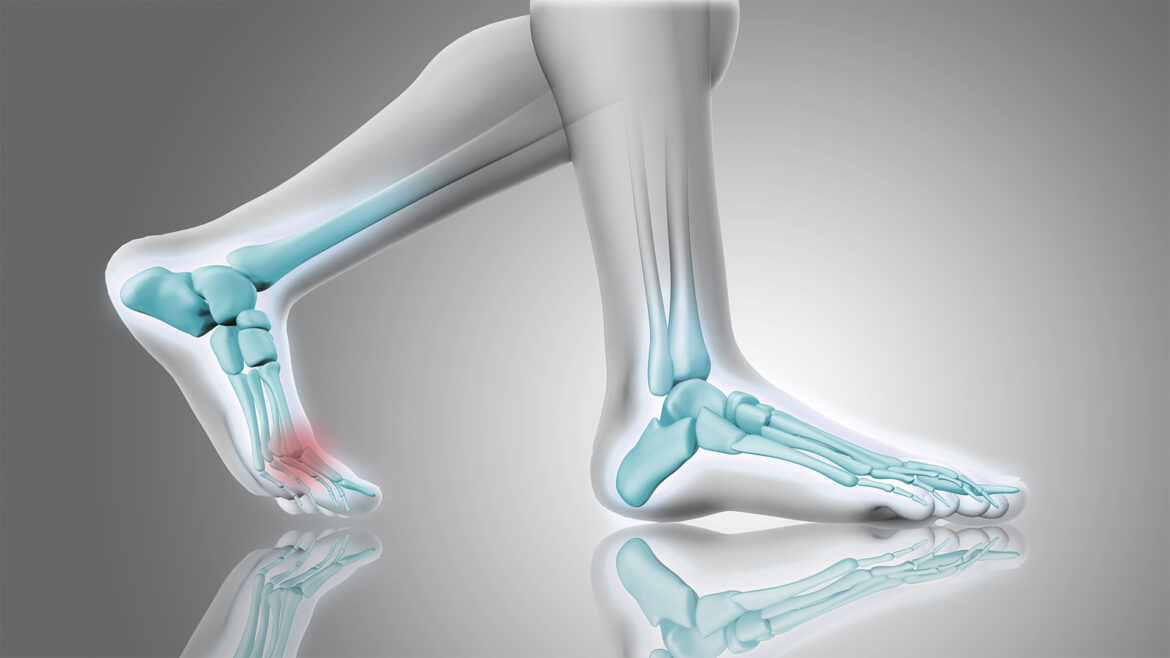Bunions, or Hallux Valgus, are one of the most common foot pathologies and one of the most relevant and important, not only in the biomechanics of the foot, but also in the overall biomechanics of our body.
In this article we will explain their relationship with the practice of padel.
WHAT ARE BUNIONS OR HALLUX VALGUS?
A “bunion” or hallux valgus is a deviation of the first toe towards the outer side of the foot. Although it has always been said that bunions are inherited, this is not true. Bunions are caused by altered foot biomechanics. Some of the factors that directly influence the appearance of a bunion are:
- Increased pronation of the foot (foot turned inwards).
- Shortening or high tension in calf and/or soleus.
- Second metatarsal longer than the first.
- Narrow toe box shoes.

HOW DO BUNIONS AFFECT PADEL?
The first metatarsophalangeal joint, or the joint between the first metatarsal and the first toe, is one of the most important in the biomechanics of our locomotor system.
Its correct functioning is essential in actions such as walking, running or jumping.
It is responsible for directly and indirectly activating a series of mechanisms that help us to produce force efficiently during toe-off, as well as helping us to absorb energy during impact.

In this way, bunions generate a dysfunction of this joint, that is to say, they do not allow the toe to flex correctly, directly influencing the practice of padel in the following way:
- DISTURBANCE OF STABILITY AND BALANCE: People with bunions are more prone to ankle sprains. In addition, when landing from jumps, the stability of the entire lower limb is significantly reduced, which can lead to more serious injuries.
- LOWER JUMP HEIGHT: Bunions prevent us from correctly flexing the first toe, which has a negative influence on the ability to perform a vertical jump. They also alter the position of some of the foot muscles that influence jumping.
- LESS SPEED IN MOVEMENT: Like the vertical jump, the joint of the first toe is very important in the toe-off phase of the foot during the toe-off phase. If it is impaired, it reduces the ability to move.
- MORE RISK OF INJURIES: people with bunions are at a higher risk of suffering injuries such as plantar fasciitis, metatarsalgia, ankle sprains, overloads or fibrillar tears of the calf or soleus…
WHAT CAN I DO IF I HAVE A BUNION?
If bunions do not cause excessive pain or disable everyday actions, surgery is not recommended.
If you have a bunion, the ideal thing to do is to see a podiatrist to:
- Analyse the cause of the bunion.
- Analyse how it currently influences other structures and actions in daily life and sport-specific actions.
- Try to minimise the short- and long-term effects on other structures of our body.
In addition, it is of vital importance to carry out a correct and adequate physical preparation to work on stability, strength and speed to try to minimise the alterations caused by the bunion in our footprint and in our sporting practice.
Another aspect to take into account is using a shoes with a wide last, wide enough for your foot type, as a narrow last will promote toe deformity.


